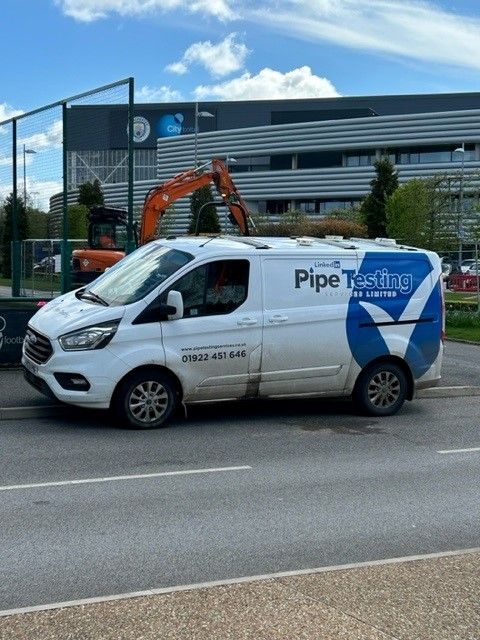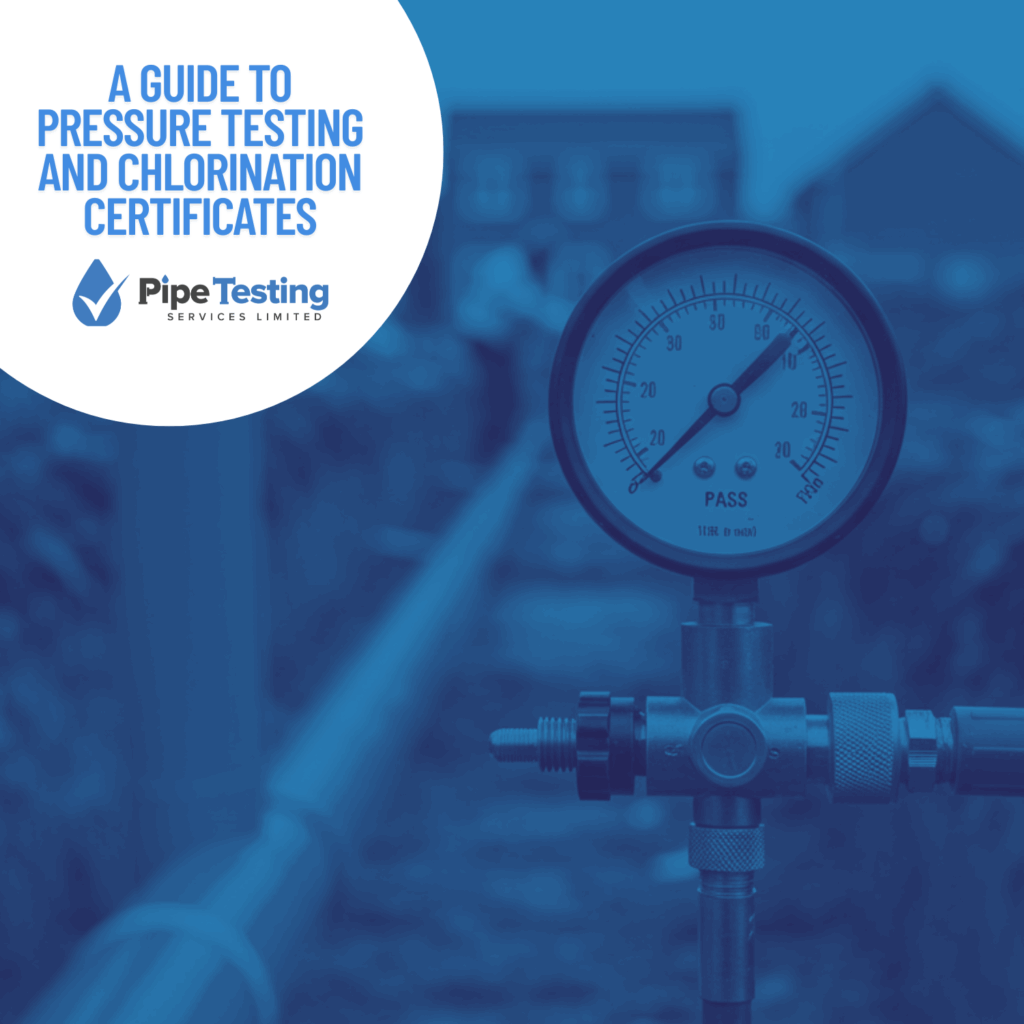Getting Your New Water Main Connected: A Guide to Pressure Testing and Chlorination Certificates
You’ve laid the pipe, the trench is ready, and your project is nearing the finish line. Then comes the final hurdle: before the local water authority, such as Severn Trent or Yorkshire Water, will connect your new water main to their network, they demand proof that it is clean, strong, and safe.
Suddenly, you need a pressure test, chlorination, and a water quality certificate, and project deadlines are looming. This is a common scenario we see every day from contractors and developers across the UK.
This guide explains exactly what is required, the process involved, and how to get the correct documentation to ensure your new water main is commissioned without any hassle.
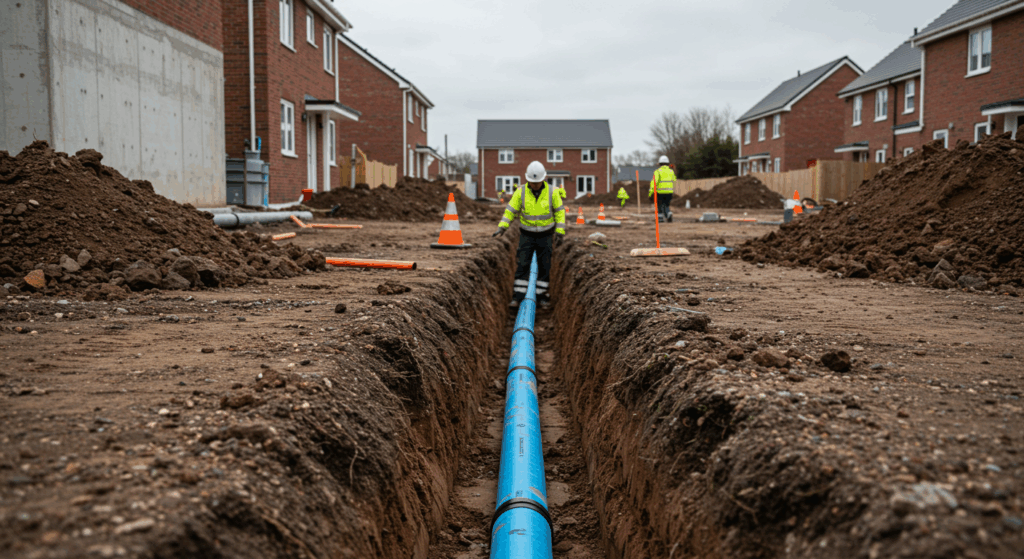
Why You Need to Test and Disinfect Before Connecting
Water authorities are legally responsible for protecting the public water supply. Any new pipework, no matter the length, is seen as a potential source of contamination. During installation, soil, debris, and bacteria can easily enter the pipe. A pressure test and chlorination prove two separate but equally important things:
- The pipe is structurally sound and leak-free. (The Pressure Test)
- The pipe is internally sterile and free from harmful bacteria. (The Chlorination)
Passing these tests is a non-negotiable requirement of the BS 8558 standard, which is the code of practice for designing, installing, and commissioning domestic water systems.
The Three Key Steps to Getting a Pass Certificate
To get the compliance documents you need, a specific sequence of work must be carried out. At Pipe Testing Services, we handle this as a single, seamless process.
Step 1: The Hydrostatic Pressure Test - Proving it's Strong
First, we prove the pipe won’t leak. The new pipe section is filled with water and pressurised to 1.5 times its normal working pressure. We use digital data loggers to hold and monitor this pressure for a set period. A stable pressure reading provides a clear pass, proving the pipe and every joint—whether fusion-welded or mechanical—is completely watertight.
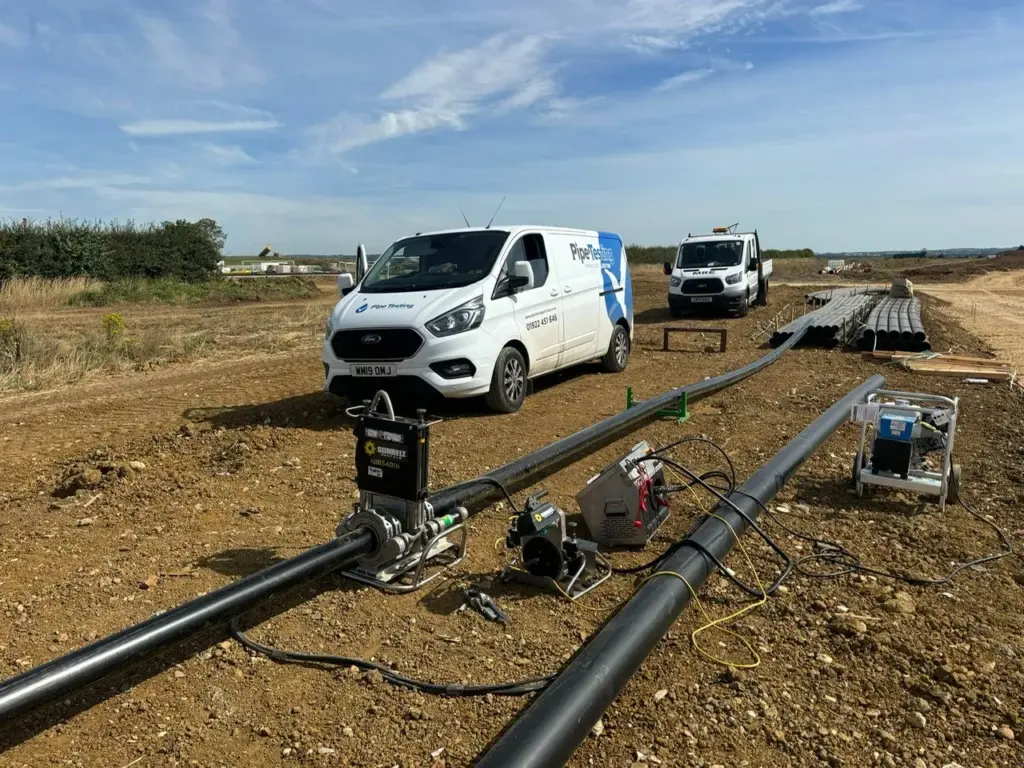
Step 2: The System Chlorination - Proving it's Clean
Once the pipe’s integrity is confirmed, it must be disinfected. We introduce a chlorine solution at a specific concentration throughout the new main. This is left for a required contact time (usually at least one hour) to thoroughly kill any bacteria that entered during the installation process. This is more than just a flush; it’s a full sterilisation.
Step 3: The Water Sample - Proving it's Safe
The final step is providing impartial proof of cleanliness. After the chlorine is flushed out, a water sample is taken from the new pipework and sent to an independent, UKAS-accredited laboratory. They test the sample for a range of bacteria, including E. coli and coliforms. A clear result from the lab is the final piece of evidence.
The "Golden Ticket": Your Compliance Certificate
Once all three steps are successfully completed, we issue a comprehensive compliance pack. This includes:
- A Hydrostatic Pressure Test Certificate showing the pressure graph and pass result.
- A Chlorination Certificate detailing the disinfection process.
- The official UKAS Laboratory results for the water sample.
This pack contains everything you need to give to the water authority or building control officer to get your new connection signed off.
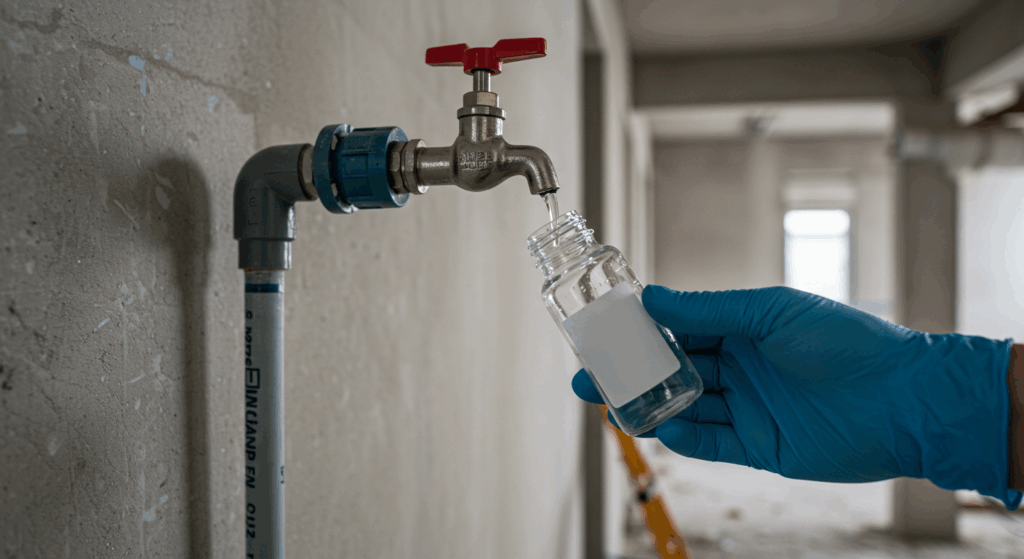
Common Queries
The water board just said I need a certificate. Which one?
They almost always mean the full pack: pressure test, chlorination, and a passing water sample. We can clarify the exact requirements for your specific water authority.
My pipe is only a short run on private land. Is this still needed?
Yes. If the pipe is a new installation that will carry potable water and connect to the public supply, its length or location on private land doesn’t change the requirement to prove it is clean and safe.
I've been let down by another contractor. How quickly can you do this?
This is a common problem. We have teams across the country and can often schedule work at short notice to keep projects moving. The on-site work (pressure test and chlorination) can usually be done in a single day, but laboratory results for the water sample typically take 3-5 days to come back.
We also need a TMV service / a leak found / a small vessel tested. Can you do that too?
Yes. Many of our clients start with a new main connection and then use us for our other services. We can provide quotes for TMV maintenance, leak detection, or specialist pressure testing for vessels and other components.
Choosing the Right Partner to Avoid Delays
Your new water main connection is one of the final steps of your project. The last thing you need are delays caused by incorrect procedures or incomplete paperwork. Choosing a specialist contractor like Pipe Testing Services means you get:
- An All-in-One Service: We handle everything from the test itself to providing the final, compliant certificate pack.
- Expertise with Water Authorities: We know what inspectors from Severn Trent, Yorkshire Water, and others are looking for.
- Peace of Mind: You get a reliable, professional service designed to get your project over the line, with clear communication throughout.
If you are a contractor, developer, or homeowner and have been advised that you need to get your new water supply tested and certified, contact our expert team today.
To discuss your requirements, schedule a consultation, or request a quote, please contact us at:
- Phone – 01922 451646
- Email – enquiries@pipetestingservices.co.uk
- Address – Unit 27 Birchbrook Industrial Estate, Shenstone, Lichfield, Staffs, WS14 0DJ
